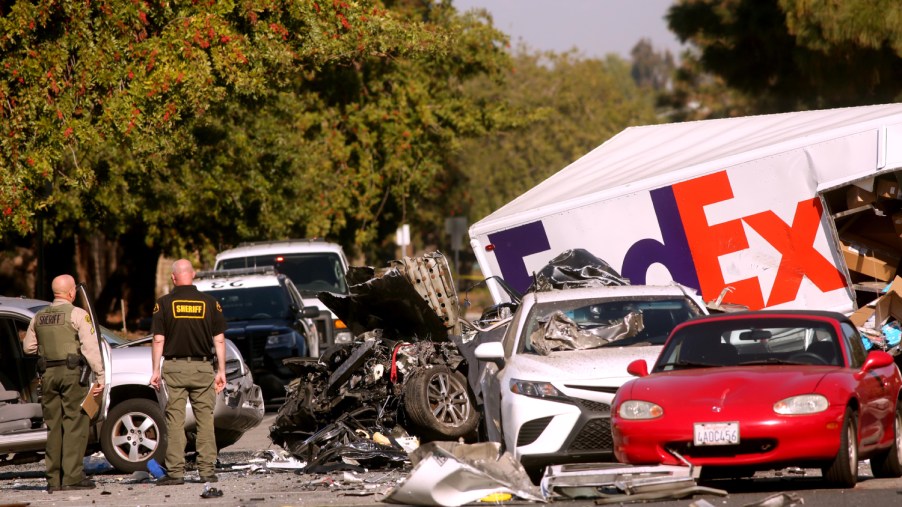
9 Factors Impacting Your Car Insurance Rates in 2022, According to Kelley Blue Book
Getting insurance on your new car or used car is imperative but can be a complicated process. Kelley Blue Book has some insight into the factors that can impact car insurance rates.
The level of car insurance coverage will affect the rate

This is one of the more essential factors that Kelley Blue Book says can impact your insurance rates. Drivers may choose a lot of coverage or a little coverage, depending on budgets or other factors. It is always good to have more insurance coverage, but that also means the cost is higher. Less insurance is less expensive, but also leaves drivers open to more risk in the case of an accident.
The average monthly cost for liability coverage is $172.61, according to insurance research company Savvy. The least expensive is SafeAuto at $98.16. The most expensive is MetLife, coming in at $269.42. The average cost for all insurance policies, besides liability, is $178.48. SafeAuto is again the cheapest ($87.02) while Bristol West is the most expensive ($277.27). States vary on what kind of coverage is needed.
The amount of your deductible impacts your car insurance rate
There are two options: a high-deductible policy and a low-deductible policy. A higher deductible car insurance plan will have a lower cost monthly. A lower deductible will be more costly month-to-month. The Zebra notes the most common deductible levels are $500 and $1,000. With the $500 deductible, the average cost of a six-month premium is $744. The $1,000 deducible is about $678 average for the same policy, The Zebra notes.
Having many previous claims can affect your rate
Kelley Blue Book says, “from the perspective of a car insurer, drivers who previously filed a car insurance claim would be more likely to file a claim in the future.” Drivers with more claims on file can see an average increase of about 42%. Switching companies won’t help either, due to the Claim Loss Underwriting Exchange (CLUE) database. For the most part, companies look at the last three to five years of claim history. You can search around to find one that doesn’t look so far back if you have a not-so-recent claim on your history.
Your demographics such as age, location, gender, and marital status
Those aged 18 to 24 have the highest average value ($2,682.69), up to $400 more than other age groups. 25 to 34 tends to be the lowest rate ($2,136.87), followed by those aged 35 to 49 ($2,224.82). The rates for 50 to 69 year-olds go up again ($2,252.31) and then go up further for those above the age of 70 ($2,282.10).
Wimen tend to pay more per year on average ($3,397.26) than men ($2,372.60). States like California, Hawaii, Massachusetts and Pennsylvania don’t factor in gender. Married couples tend to pay about $100 less over a six month period than a single person, The Zebra says.
Don’t forget your credit history
Unfortunately, those with a poor credit history tend to pay more for insurance. A study by The Zebra looked at 73 million rates and found those with poor credit pay up to 115% more than those with good credit. That can work out to almost $1,500 a year. Some states like Maryland, Massachusetts, California, and Utah don’t use credit history to determine car insurance rates.
A clean driving history will help keep your car insurance costs low
Having less accidents and incidents on your record helps keep your rate low. Many companies offer a safe driver discount that can lower rates up to 40%. Insurance companies will check motor vehicle records to look for violations like a DUI, speeding tickets, or other charges. A defensive driving class is a good way to lower your car insurance rates.
Your annual mileage might cost you
The more you drive, the more you pay. Those who drive less than 6,000 miles a year had an average annual rate per vehicle of $2,029.88. Drivers who logged 20,000 miles or more in a single year paid around $2,101.60, according to Savvy. The Federal Highway Administration says that the average driver records around 14,000 miles per year.
The car make and model are important to note
Luxury cars are more expensive to fix, which means these vehicles can be more expensive. Kelley Blue Book says that companies use this information to determine how high the cost might be should the vehicle need replacing. Some luxury cars showed a 6% increase in car insurance rates. Vehicles that are also targets of crime like carjacking or theft might also see an increase in car insurance rates.
The location of your home address can change your car insurance rates
Car insurance companies look at your zip code to determine how much crime might occur in the location at any given time. It can also look at the occurrence of things like floods, fires, or other natural disasters. Low crime or more rural areas often mean a lower rate than areas with a lot of crime or risk.
Kelley Blue Book suggests looking at your deductible and available discounts to see which company has the best rate to offer. Then you can shop around to see



